Product
Specialized Food Machinery Company
E-QUVE
Low-Emissivity Hybrid Insulation
An eco-friendly insulation material that effectively blocks radiant heat, prevents condensation and draft, and does not emit any hazardous substances such as HCHO, TVOCs, etc.

| ITEM | EQUVE 5T | EQUVE 6T | EQUVE 10T | ||
|---|---|---|---|---|---|
| Model | Unit | EQ-0051 | EQ-0061 | EQ-0101 | |
| Thickness | ㎜ | 5±0.25 | 6±0.25 | 10±0.25 | |
| Emittance | ε | 0.049 | |||
| R-value | ㎡·K/W | 1.061 | 1.087 | 1.563 | |
| U-value | W/㎡·K | 0.94 | 0.92 | 0.64 | |
| Water Vapour Transmission | g/㎡·24h | 3.1 | |||
| Tensile Strength | Length | N/50㎜ | 43 | 43 | 49 |
| Width | N/50㎜ | 46 | 46 | 46 | |
| Elongation | Length | % | 2 | 2 | 3 |
| Width | % | 2 | 2 | 2 | |
| Tearing Strength | Length | N | 17 | 16 | 18 |
| Width | N | 16 | 15 | 18 | |
| HCHO | ㎎/㎏ | N.D | |||
| VOC | ㎎/㎏ | <1 | |||
| U | Reflective Insulation | ||||

EQ 5T
- Size | 5mm x 1m x 50m
- Structure | AL Foil + PE Foam + AL Evaporated Film
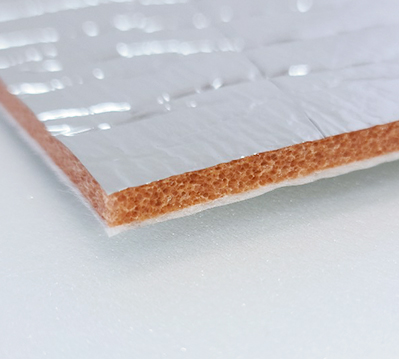
EQ 6T
- Size | 6mm x 1m x 50m
- Structure | AL Foil + Non-Woven Felt + PE Foam + AL Evaporated Film
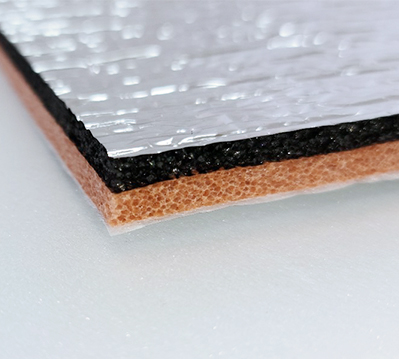
EQ 10T
- Size | 10mm x 1m x 25m
- Structure | AL Foil + Non-Woven Felt + PE Foam + AL Evaporated Film
LWO.EMISSIVITY HYBRID INSULATION
Low-Emissivity Hybrid Insulation

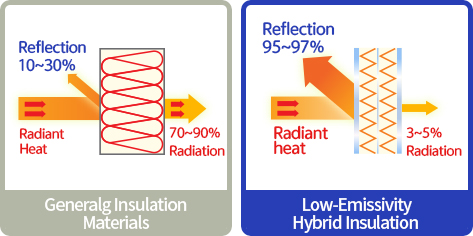
Low-Emissivity Hybrid Insulation?
Low-emissivity hybrid insulation blocks 90% of radiant heat by using
an aluminum layer with low-emissivity properties that effectively blocks radiant heat,
and it secondarily blocks convective heat
and conductive heat in multiple closed air layers (cells) with low conductivity.
It is a new-concept hybrid insulation material made with optimal insulation material
that minimizes heat transfer and energy loss.
POINT
E-QUVE Feature Point
-
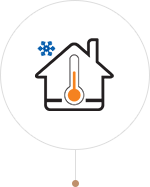 Insulating property
Insulating propertyExpanded PE foam for cold and heat resistance
-
 Constructability
ConstructabilityConstruction is easy
with flexible materials. -
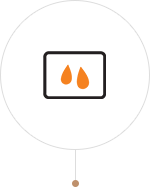 Functionality
FunctionalityCondensation prevention and draft prevention
-
 Eco-friendly
Eco-friendlyNo detection of hazardous substances l
such as HCHO and TVOCs -
 Economic efficiency
Economic efficiencyReduced thickness compared to general
insulation materials and semi-permanent life
ECO-FRIENDLY
Eco-friendly Manufacturing Method
High-efficiency insulation
60-70% thinner but the same level of insulation performance
Eco-friendly manufacturing method
Chemical adhesives (HCHO, TVOCs, etc.) not required, due to the application of a thermosetting method
METHOD
Construction Method
- The substrate should be made flat, smooth and clean by removing protrusions, such as nails, wires, and mortar, as the presence of such materials will likely impede the installation process.
- Install the insulation material according to the arrangement plan. Use a cutter to cut the insulation material straight on site.
- Overlap two pieces of the insulation material during installation. If there is a need to connect the insulation materials, make sure the joints are away from each other.
-
When attaching the insulation material to the substrate, smooth out the surface of the substrate first, and make sure that the two materials are in close contact with each other.
(Depending on the situation of the installation site, it is possible to use an adhesive type or securing pieces (cap stapler, fasteners, etc.).) - When using securing pieces (cap stapler, etc.), use 9 to 15 pieces per 1㎡ and make sure that the aluminum surface is not damaged during installation.
-
The joint part of the insulation material should not have any gap, and this is ensured by using tape or adhesive.
Reinforce the area where the half-lap joint technique cannot be applied with an adequate insulation material.
NOTICE
E-QUVE Notice
-
Precautions & Instructions
- Remove all foreign substances from the wall to prevent interference with the installation of the insulation material and dry the wall completely.
- The insulation material should be processed on a clean, flat surface, but make sure to use appropriate tools to process it into correct dimensions without any damage to the material.
-
Use a designated tape to prevent gaps in the joints of the insulation material.
When installing multiple layers of the insulation material, the joints should not be aligned. - As for the corners, etc., make sure that there is no gap with the wall or areas that are not insulated.
-
If there is any loss or damage to the insulation material due to the installation of the finishing material and the structure of any installations, fill the area with foam (urethane, etc.) and attach tape.
Then, if there aren’t any problems, clean up the site and finish off the work.
-
Precautions & Instructions for Transport, Storage and Handling
- Be careful when transporting and handling the insulating material to prevent damage.
- Be careful when transporting and handling the insulating material to prevent damage. Insulation materials should not be directly exposed to sunlight, rain, or wind and should be stored in a well-ventilated place with low humidity and good ventilation. They should be stored according to their respective uses, type, characteristics and shape.
- Do not place any heavy objects on the insulating material and do not leave it outside for more than 2 months.
- The exposed surface of the insulation material should be marked with a joint, etc., and the loading height should be no more than 2m.
- Always store insulation products upright in a way that they do not come into direct contact with the ground.
-
Precautions & Instructions After Installation
- Prevent excessive impact and keep it clean.